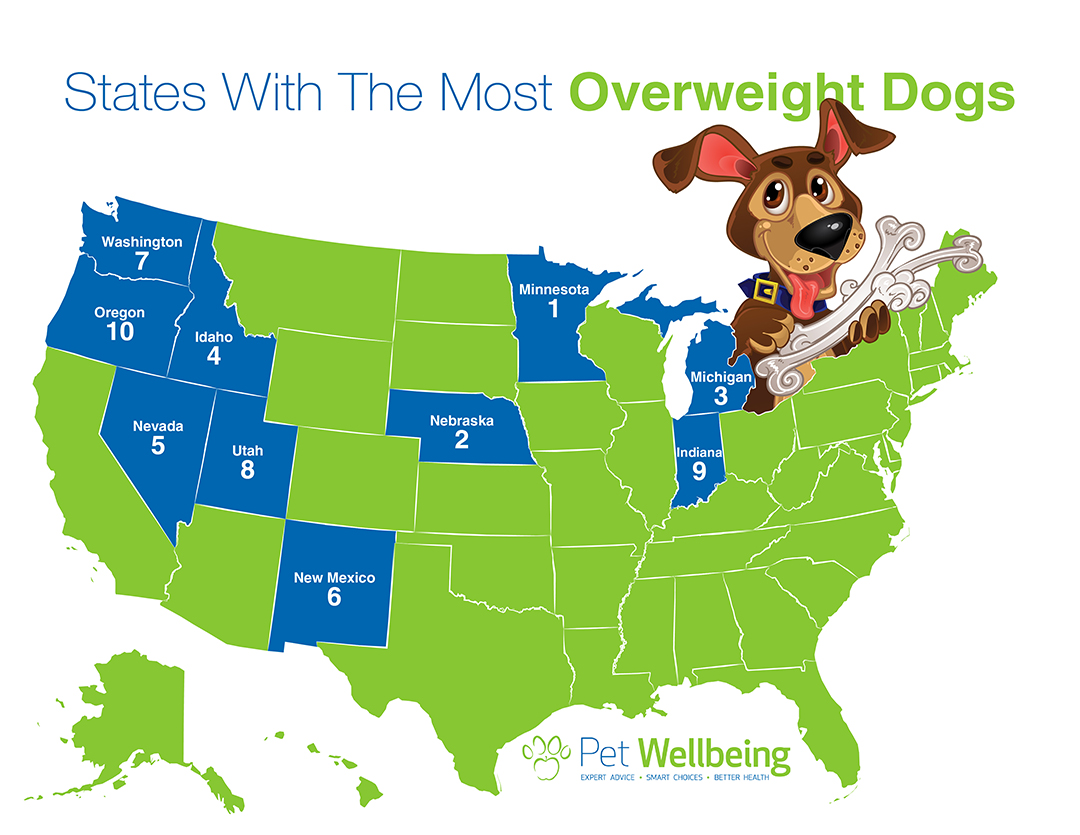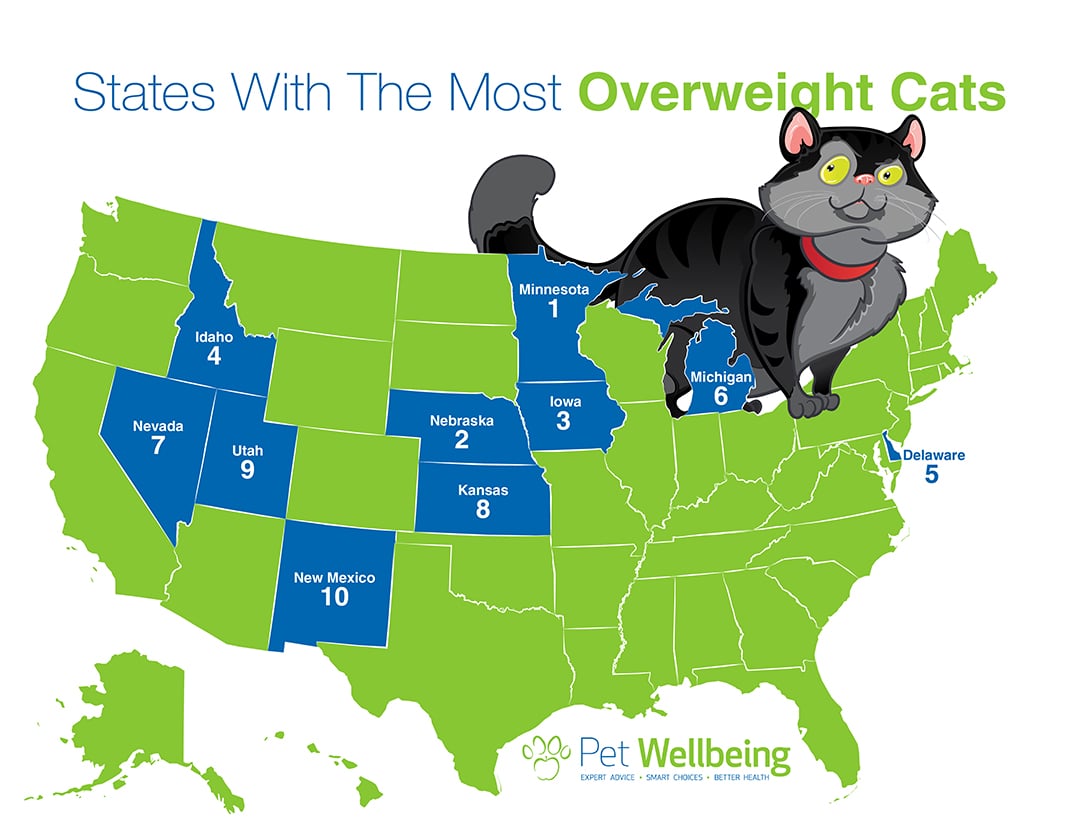
Think The Fattest States Have The Fattest Pets? Think Again, Research Says
The relationship between human obesity and different regions of the US isn’t too difficult to comprehend. For example, most of the least educated states are located down south, therefore it’s no surprise that these states have some of the highest obesity rates in the country. This suggests that the same concept would apply to pets but a new report compiled by veterinary hospital chain Banfield argues the complete opposite.
Researchers analyzed data on more than 2.5 million dogs and 500,000 cats who visited one of Banfield’s 975 hospitals spanning throughout 42 states last year. Of those dogs and cats, one in three was deemed overweight or obese following a visual and physical assessment conducted by the hospitals’ veterinarians.
Banfield, which has monitored obesity rates of the pets it treats, told the Washington Post that these findings marked a 158% increase in overweight dogs and a 169% increase in overweight cats since 2006.
While an increase in pet obesity isn’t exactly shocking, Banfield’s vets did not expect to learn that some of the states with the most overweight people, like Louisiana, Alabama and Mississippi, were among the five states with the lowest pet obesity rates.
As for the states with the highest pet obesity rates, common sense would tell you that a state like Colorado, which is known for its active, outdoorsy culture, would be at the bottom of the list. But the report has Colorado’s dogs and cats in the top 20 highest pet obesity rates, followed by health-conscious Oregon and Washington state within the top ten.
The most overweight or obese dogs and cats in the country can be found in Minnesota, with 41% of dogs and 46% of cats earning these labels. Coming in at second for both dogs and cats was Nebraska, where 39% of dogs and 43% of cats are overweight or obese.
The fact that healthier states don’t have the healthiest pets speaks volumes about the inability of many pet owners to tell when their pets are overweight or are being subjected to an unhealthy lifestyle. Some of these pet owners likely subscribe to the growing trend of spoiling pets with excessive treats and table scraps as if they were human children. Like a mother who tries to appease her child with food or toys, the modern pet owner has a tendency to believe he or she is showing “love�? by supplying enough food to keep the pet in good spirits.
Pet owners might also not be able to recognize visual signs of obesity due to the widespread normalization and adoration of plump pets.
Britain’s renowned Crufts dog show exemplified this problem in 2015 when the event named the top five dogs that best represent the ideal examples of their breeds. According to the New York Times, one in four dogs in these top five lists was revealed to be overweight, possibly because the judges had adjusted their criteria to the “new standards�? for a pet’s acceptable weight.
If your pet’s health isn’t enough motivation to maintain a balanced diet and exercise routine, Banfield advises pet owners to think of the cost of treating conditions fueled by obesity. Figures accumulated by the chain reportedly state that owners of overweight dogs spend 25% more on medications while owners of overweight cats spend 36% more on tests to diagnose obesity-related conditions.
Here are the top ten states with the most overweight dogs and cats:




